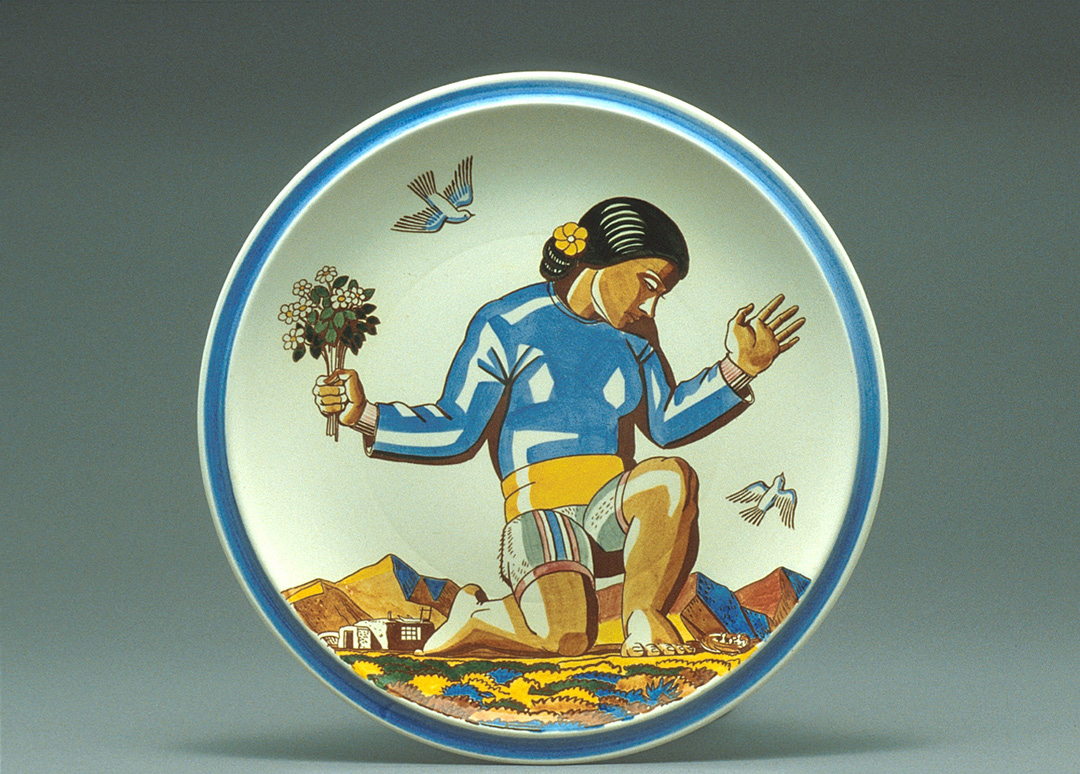Object of the Week: Chop Plate
When you think of Rockwell Kent, Herman Melville’s 1930 edition of Moby Dick might first come to mind, as his illustrations for the great American novel are, for many, as beloved as the story of the whale itself. A celebrated draughtsman, printmaker, author, and explorer, Kent’s highly stylized brand of social realism was reproduced in many contexts, and has since become inextricable from the American visual culture of the 1930s and 40s. The artist’s prolific output is difficult to summarize, but a large majority of his work depicts human figures set against the natural world—compositions informed by his interest in transcendentalist philosophy.
Also a self-proclaimed pacifist and socialist, Kent’s political leanings often imbued his work with a proletarian sentiment: images of the working class transitioning from an agrarian to industrial society. With this in mind, Kent’s predilection for working in mediums that saw mass production and widespread distribution—such as bookplates, book jackets, prints, advertisements, and posters—might also explain his willingness to work with California-based Vernon Kilns on designs for a line of dinnerware, perhaps the most utilitarian of the aforementioned objects.
Adapted from the illustrations Kent created for his 1935 book titled Salamina, a chronicle of his life and travels while in Greenland, this hand-tinted chop plate (a round platter) focuses our attention on the strong, kneeling body of a beautiful young woman: Salamina.[1] Rendered with Kent’s characteristic graphic sensibility, her body and surrounding landscape are comprised of geometric highlights and shadows. In the middle ground, between her feet and the mountains behind her—colorful triangles of blue, yellow, and brown—are an adobe-style house and bird’s nest. While these details are suggestive of the American Southwest, they are likely of Greenland (during the summer, of course) and present a romanticized portrait of both a person and a place, basking in golden hour light. With the addition of the doves and flowers, it evinces an air of nostalgia for a time when human beings lived in harmony with the natural world.
Unfortunately for Kent, this line of dinnerware (as well as two others made for Vernon Kilns) is a lesser-known aspect of his career. Due to its short production span and the fallout resulting from the artist’s outspoken political views, many people are unaware of the series and Kent’s contributions to the American decorative arts.[2]
– Elisabeth Smith, Collections Coordinator
